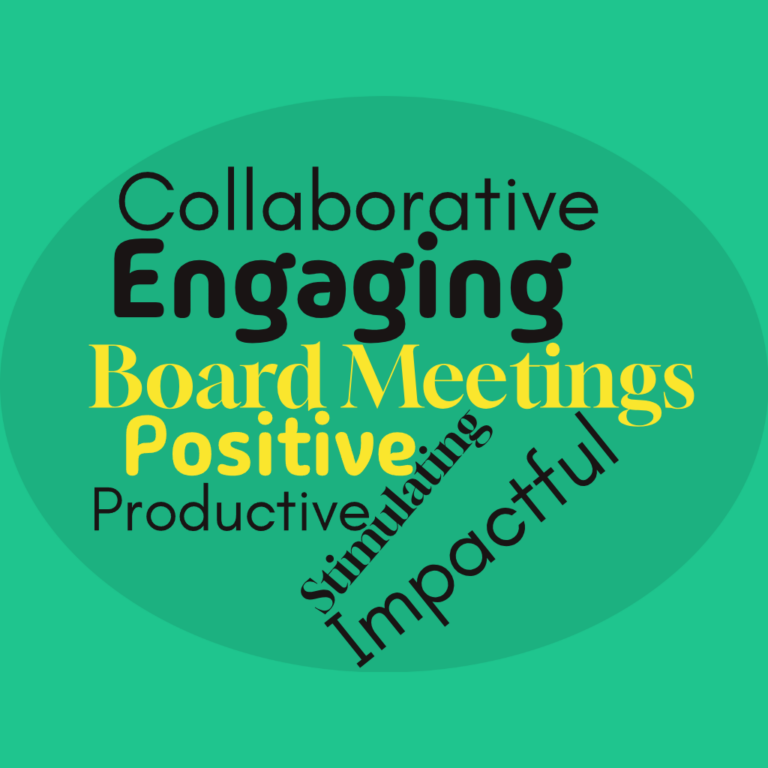
In Crisis, Engage Your Board
During a crisis, it’s critical to make sure your nonprofit’s board is fully engaged. A crisis is not an excuse for a board to ignore
Welcome to Hardy Smith’s blog, where he shares experience and insight learned through decades in the corporate world and advocating on behalf of nonprofits and associations across America.
Hardy’s mission is to help maximize the performance of nonprofits and associations and their essential leadership teams.
If you’re seeking to triumph over communication challenges, bring meaningful and manageable solutions to, and realize measurable results of your organization, this blog will give you more than ideas — it will maximize your team’s performance like never before.

During a crisis, it’s critical to make sure your nonprofit’s board is fully engaged. A crisis is not an excuse for a board to ignore

Are your board meetings a turn-off or a turn-on for board members? Are they disorganized or poorly run? Do they fail to encourage active discussion?

An innovative, strategic thinking board is visionary in its approach to identifying new opportunities for the organization it serves. It also helps to develop future-proofing solutions for the challenges of change and disruption.

To stay on top successful teams must consistently execute the fundamental details their success is built on.
What is your nonprofit doing to ensure your perfect board stays perfect?

Understanding financial reports for the organization they serve, is an important part of the fiduciary responsibility of nonprofit board members.

According to research on nonprofit board chairs, many incoming chairs assume their role with little or no preparation.

Nonprofits can be challenged by board engagement not meeting expectations. This post shares actions that will increase board engagement.

Often nonprofit boards fail to meet diversity and inclusion goals because of mistakes in their recruiting process.

Nonprofits share many problems. Issues such as donor retention, volunteer turnover, and board member engagement are just a few that plague nonprofits on an ongoing basis. And, not by coincidence, nonprofits also share frustration because common approaches fail to yield positive results. Why continue to invest limited time and resources doing what doesn’t work? Perhaps best practices that don’t produce positive outcomes really are stupid. Speaker colleague Stephen Shapiro has some insight on the matter and shares his solid advice.

Can an organization with such a casual approach — picking leaders without much forethought — really be serious about achieving its stated purpose? Shouldn’t leadership selection be intentional instead of accidental?

During a crisis, it’s critical to make sure your nonprofit’s board is fully engaged. A crisis is not an excuse for a board to ignore

Are your board meetings a turn-off or a turn-on for board members? Are they disorganized or poorly run? Do they fail to encourage active discussion?

An innovative, strategic thinking board is visionary in its approach to identifying new opportunities for the organization it serves. It also helps to develop future-proofing solutions for the challenges of change and disruption.

To stay on top successful teams must consistently execute the fundamental details their success is built on.
What is your nonprofit doing to ensure your perfect board stays perfect?

Understanding financial reports for the organization they serve, is an important part of the fiduciary responsibility of nonprofit board members.

According to research on nonprofit board chairs, many incoming chairs assume their role with little or no preparation.

Nonprofits can be challenged by board engagement not meeting expectations. This post shares actions that will increase board engagement.

Often nonprofit boards fail to meet diversity and inclusion goals because of mistakes in their recruiting process.

Nonprofits share many problems. Issues such as donor retention, volunteer turnover, and board member engagement are just a few that plague nonprofits on an ongoing basis. And, not by coincidence, nonprofits also share frustration because common approaches fail to yield positive results. Why continue to invest limited time and resources doing what doesn’t work? Perhaps best practices that don’t produce positive outcomes really are stupid. Speaker colleague Stephen Shapiro has some insight on the matter and shares his solid advice.

Can an organization with such a casual approach — picking leaders without much forethought — really be serious about achieving its stated purpose? Shouldn’t leadership selection be intentional instead of accidental?
P. O. BOX 9541
DAYTONA BEACH, FL 32120
PHONE: 386-451-0652
EMAIL: HARDY@HARDYSMITH.COM